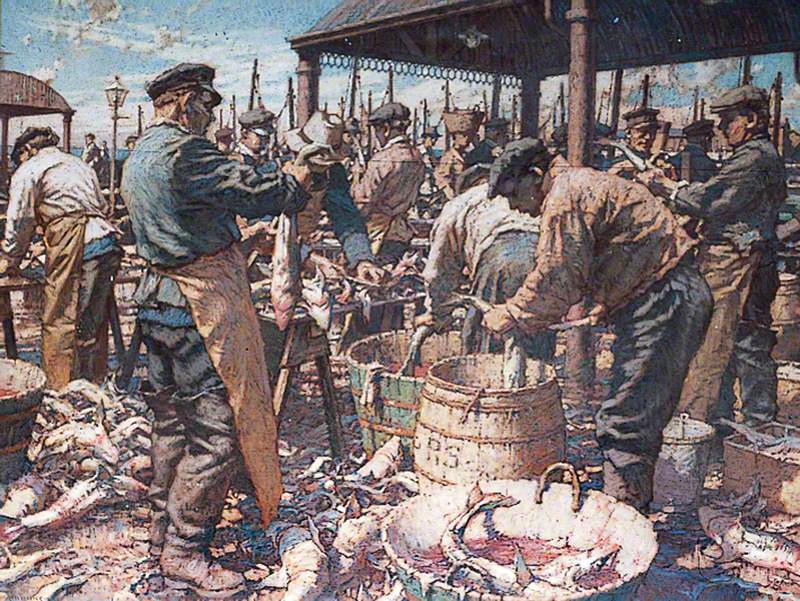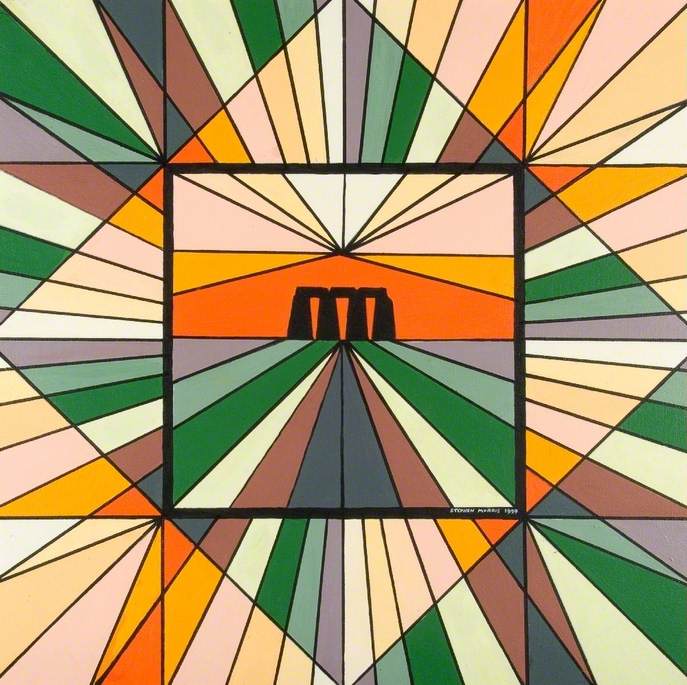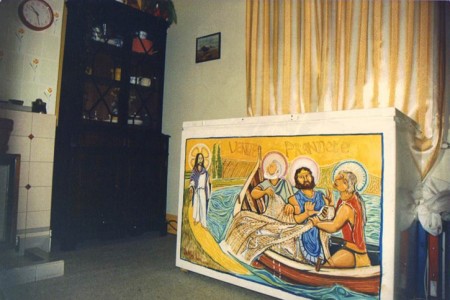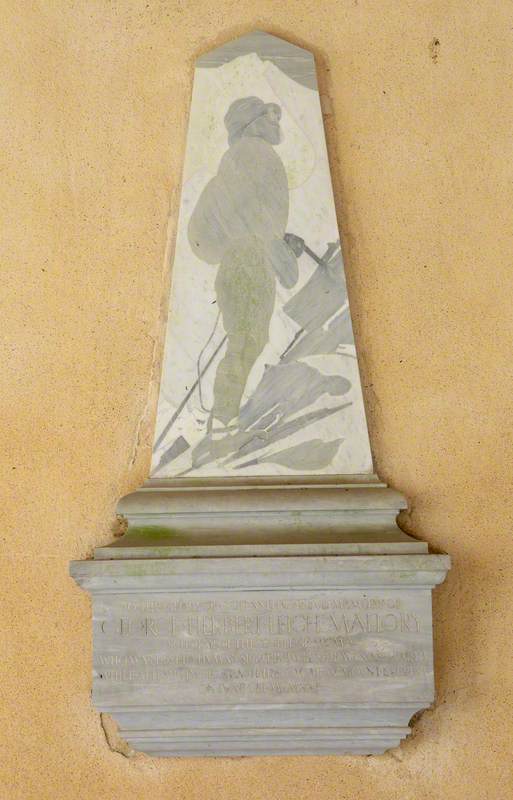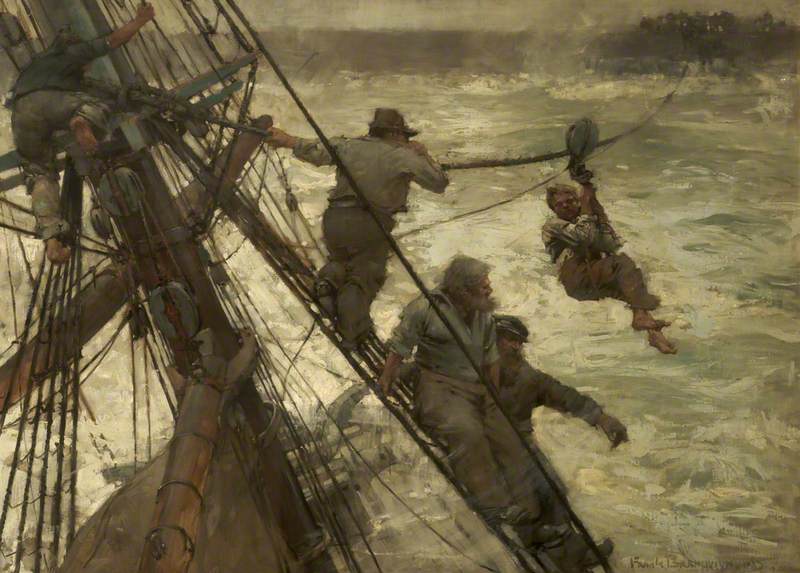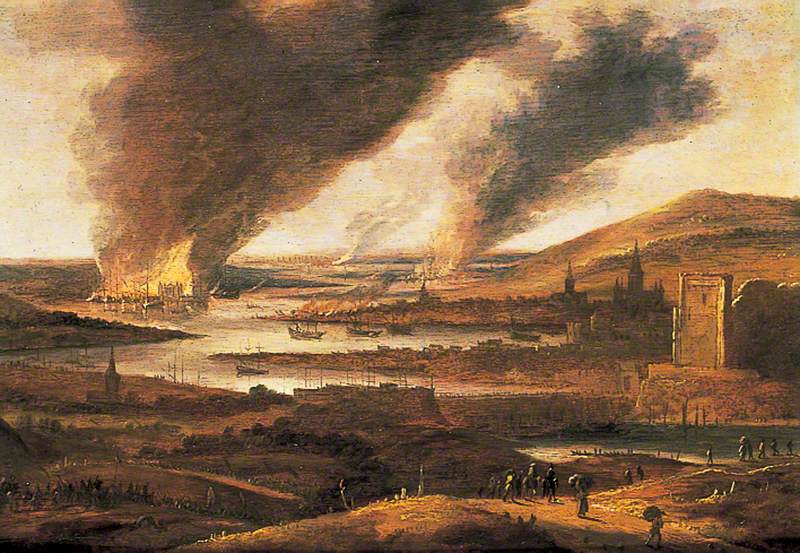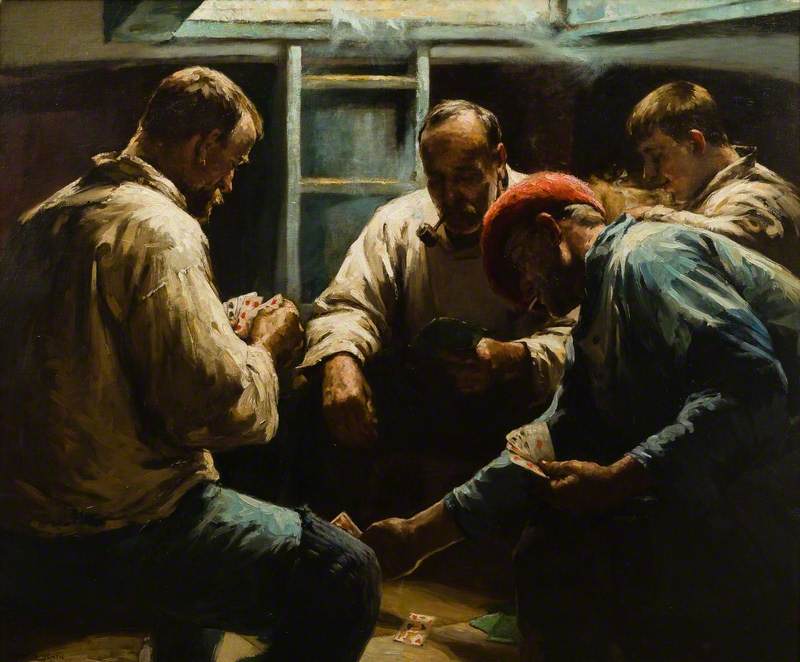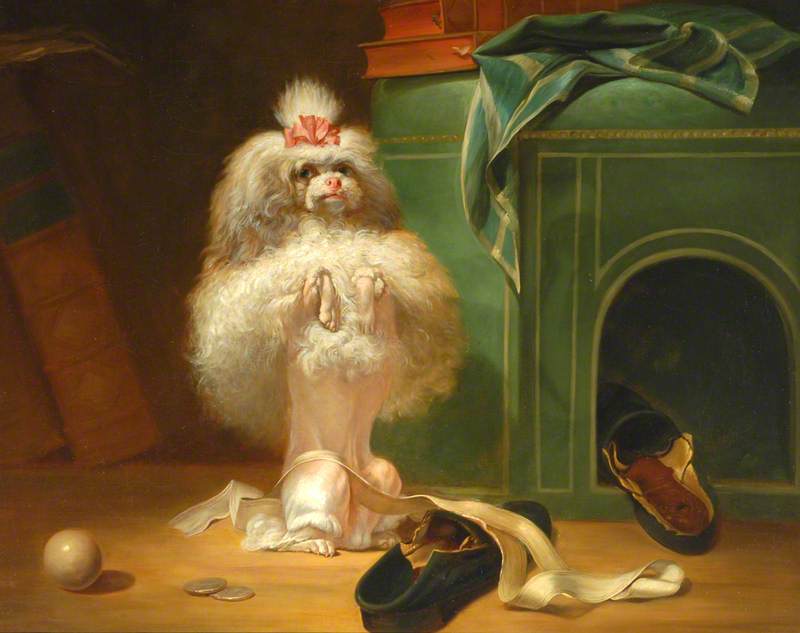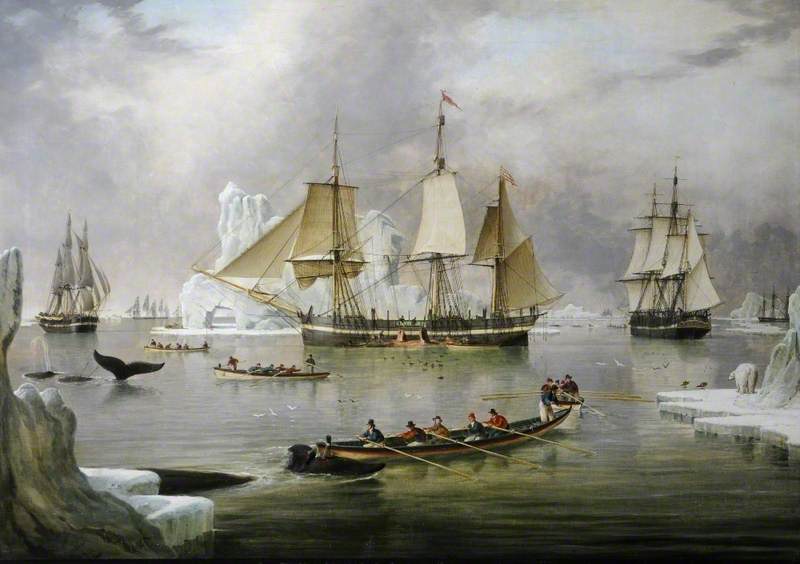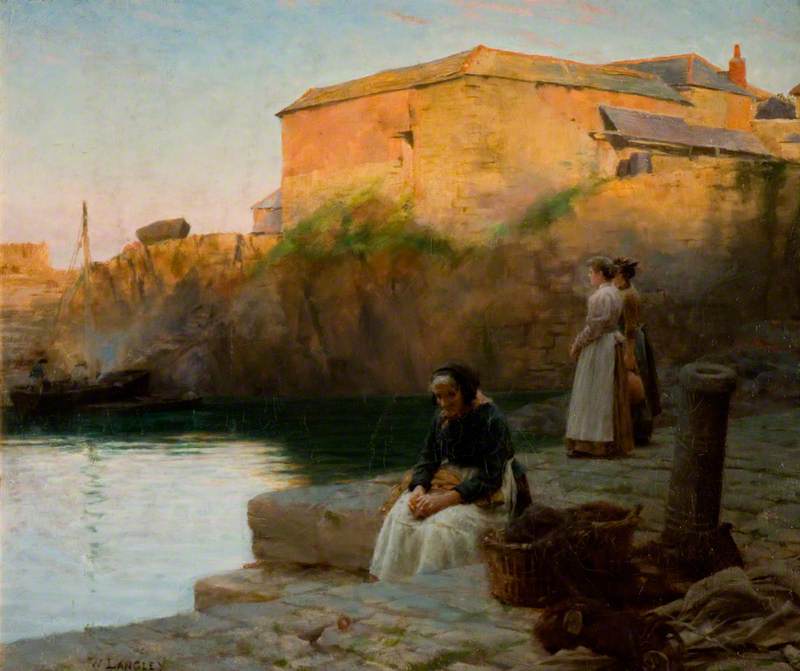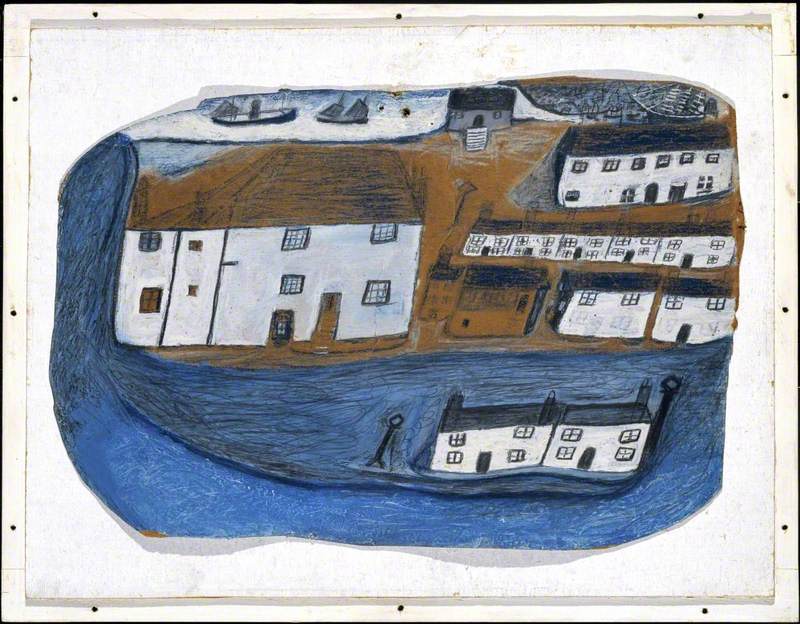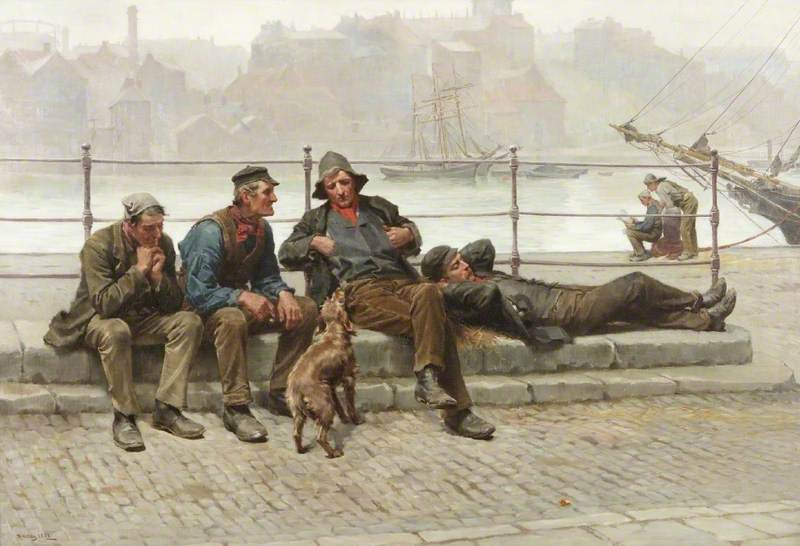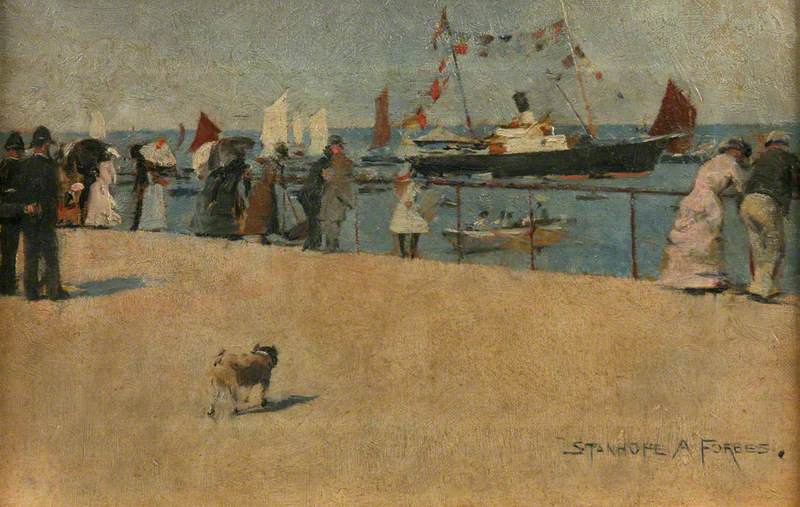Local Folkestone historian Alan Taylor explains the subject matter in the painting Dogfish Season, held at Folkestone Library.
This painting really is a depiction of the past, as at present there is a total ban on catching dogfish to allow stocks to recover.
To give you an idea of the scale of dogfish fishing we can look at the number and type of lines that were used. There are three different types of long-lines, whiting lines, cod lines and skeet lines. The type used for catching dog fish was the cod line, which has 75 hooks on it at six feet apart. The hooks were fastened to the long line with snoods which are three feet long. A fleet on lines would consist of 40 lines tied together. However long-line fishing from Folkestone finished about 20 years ago because of costs and modern methods of fishing.
Cleaning dogfish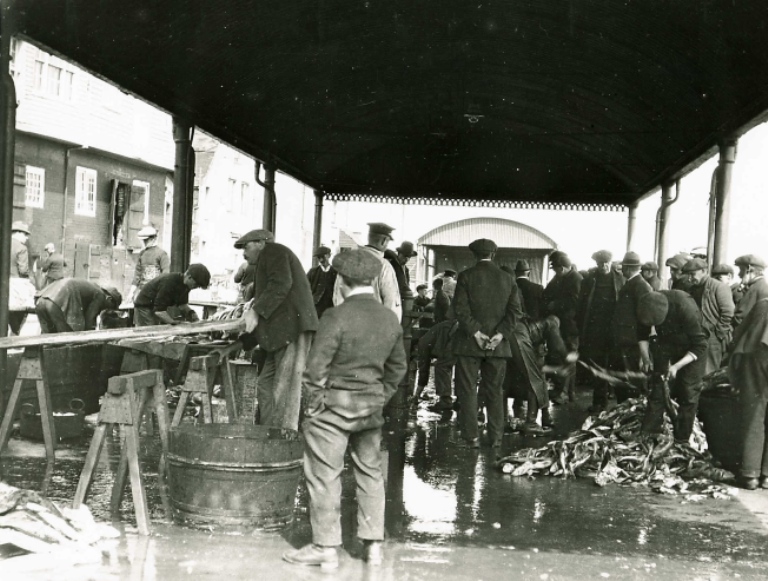
George Neil and Albert Taylor
Dogfish season in Folkestone was during the winter months. The process of catching dogfish was as following: the lines are baited and coiled into baths, then the lines are shot in a straight line anchored both ends and in the middle with marker buoys on each anchor*. The bait used for catching dogfish are sprats, herring or mackerel.
Pat Baker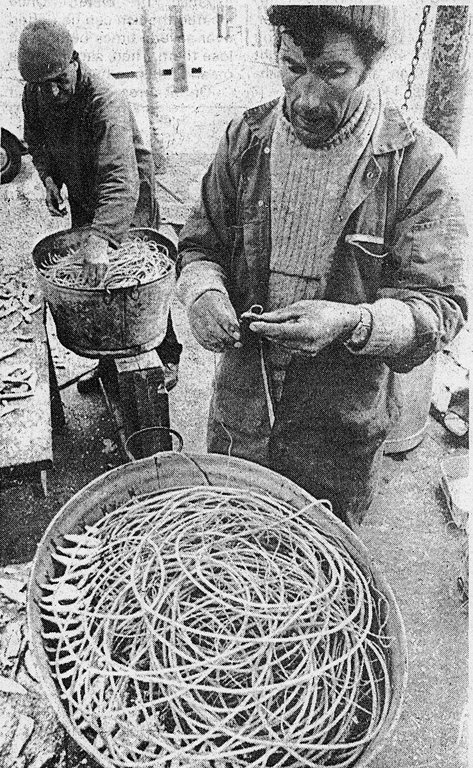
Preparing to shoot long-lines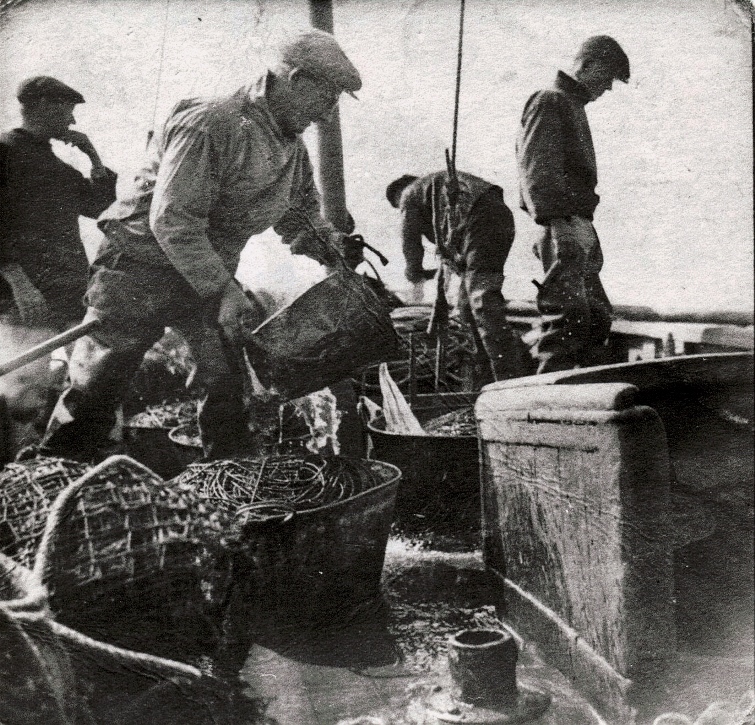
In order to prepare and eat a dogfish you start by cutting off the spur the head then skinning it. The backbone would be taken out before cooking.
Stade Market steps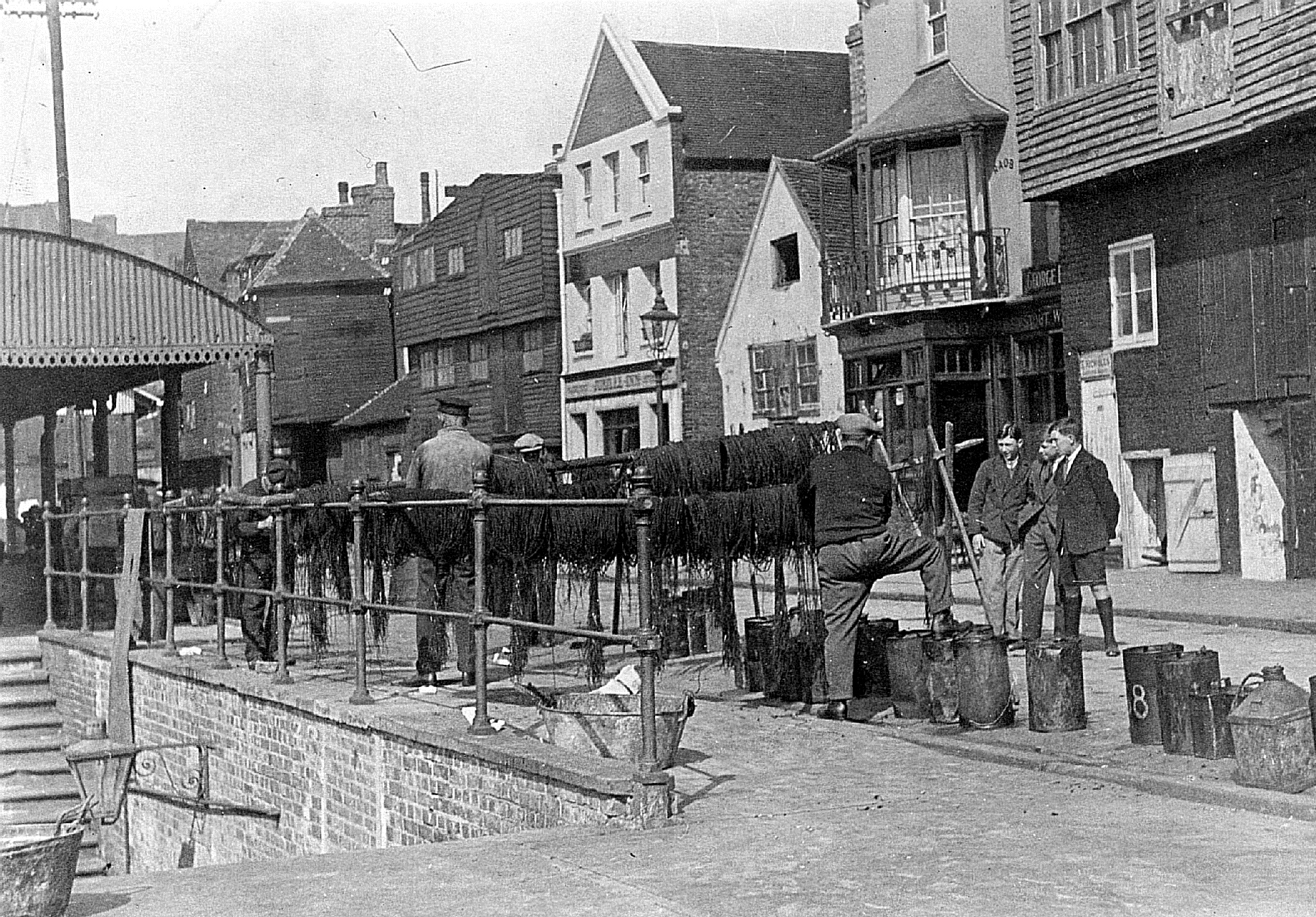
Alan Taylor, Folkestone historian
*The marker buoys are called 'dans' and the rope between the anchor and the dan is called a 'dan-string'.
